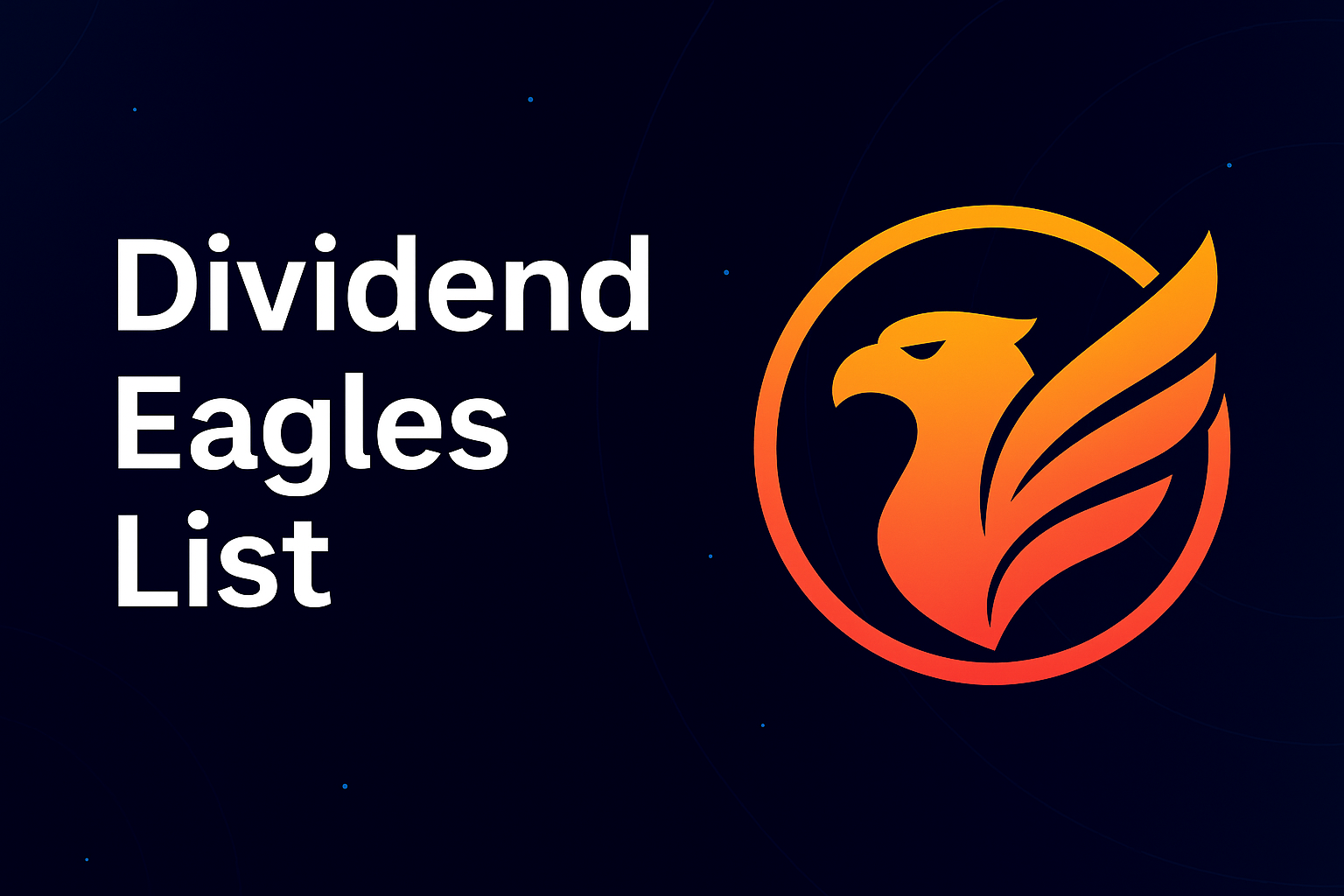Investing as a teen is a perfect way to increase the amount of money that you got from your summer job or your parents and become a millionaire by retirement. When you invest as a teen, many questions come to your mind. In this article we will discuss how to start investing in stocks as a teenager.
Table of Contents
What you should know before investing as a teen
First of all, investing is not only for traders from Wall Street, many American people invest and multiply their savings. The earlier you start investing, the greater capital you will get in the future.
Time will work for teen investors who invest smartly by small amounts because investing associates with risks and financial literacy is one of the ways to reduce these potential risks and get your income.
Know the requirements
To begin investing you should know some requirements.
A broker: A licensed broker gives you access to the stock market. A broker is usually a firm, a person or an app that provides you service.
Index funds: Index funds also give you access to the securities, but you can invest in them by putting money directly to the fund.
Real estate: this is another way to raise your capital, however it requires a lot of paperwork and contracting to own property.
Age to start: to open a brokerage account or invest in the index fund you must be usually 18 as well as to sign property purchase and sale agreements. But there are custodial brokerage accounts which teenagers may open together with their parents.
Parental support
How to start investing at 17 or how to start investing at 14? Regardless of how old you are, talk to parents because they might have experience, they might know how the stock market works or have their own retirement account. They also may consult with their professional advisor and give you his contacts. In any case, typically a parent has managed money for much longer than you did.
Get advice and guidance from professionals (not from your friends)
Managing your money can be an extremely interesting process, but to get more money and not to lose hard-earned, let data guide you and don’t forget to ask advice from professionals. Then you will raise your capital and save enough money to retirement age.
Another way to get advice is to use free online sources or special educational platforms on investing.
Clubs and virtual trading
To increase your chances to get more money and reach success in investing, consider investing clubs which attract people interested in financial literacy. The more people surround you, the faster you may learn.
If you are still wondering how to start investing as a teen, there is one more useful tool which will help you to start — virtual trading accounts that allow you to trade by virtual papers and learn how to make your first investing decisions. You can create your first portfolio with BeatMarket for free and dive into the investment process.
Learning and earning takes time
There is no need to learn everything at once, investing can be mastered for years and your first steps might take time. Just create a virtual account and try to manage your first papers learning how and when to sell your stocks and getting known new things about stock investing.
Choosing different assets and critically analysing companies over time you will be able to react to the markets and rebalance your portfolio in the best possible way.
Statistically, the best returns come from long-term investing (more than ten years). Many amateur investors tend to check their portfolio regularly and temporary falls cause emotional reaction, but short-term market corrections and movements can be considered as a normal phenomenon.
How old do you have to be to start investing
Economy in many countries does not have special conditions for young people. Usually you must reach legal age to participate in trade by yourself. However, there are some indirect ways to start and get your first interest returns.
How to start investing as a minor at 14, 15, 16 or 17 years
When you are 14, 15, 16, or 17 years old, you are supposed to be a minor, therefore you are not allowed to execute trade or open your IRA and other investment accounts by yourself. But how to start investing as a minor?
A custodial account can be your starting point. This type of the account is under control of your parents or guardian who will manage your investments till your legal age which is usually 21.
To understand how to start investing at 16, for example, or even less, let’s consider types of investing accounts for teens.
Types of Investing Accounts for teens
Account Type #1: Custodial Account
Custodial Account is a special account geared for children or teens, who want to invest. Sometimes these accounts are opened by parents to invest for their teenagers.
Legally a child does not have the access to this account till the age 18, 21 or even 24 if the teenager is a full-time college student. These accounts are similar to traditional brokerage accounts, where you can trade stocks and bonds as well as other financial instruments, but the funds are maintained by custodians (parents) who make transactions or give orders on behalf of the teenager.
Account Type #2: Jointly Owned Brokerage Account
Jointly Owned Brokerage Account is designed for usage by two people who can be either family members or partners with similar financial goals.
Thus, it is a great tool not only to pool investments of partners but also to teach children about investing. Listed account holders have total control of an investment account. They are allowed to do trades, make deposits and withdrawals, and take other related actions.
Account Type #3: Custodial Roth IRA
A Custodial Roth IRA is a retirement account which offers tax benefits and flexibility. You can open a Custodial Roth IRA in any financial institution that deals with this type of investments.
This account is also managed by parents and provides financial aid for the future of the growing child. The amount received from investments can be spent for college or other needs.
Each account type has its own features; the main benefit of Roth Custodial IRA is taxation. This account is tax-free that results in bigger savings. By means of a Custodial Roth IRA your parents on behalf of the child can invest in all the available securities and even funds (mutual funds and ETFs).
How to invest as a teenager at 18 and older
How to start investing at 18 and older? If you still ponder over this question, take a closer look at stock market and custodial accounts as well as retirement plans.
Start With Stocks
By investing in the stock market you will learn a lot about the companies and their activity. Picking up certain stocks is an incredibly exciting process during which you understand the activity of the specific company, explore the current state of the economy and learn general market terms.
At the beginning of your investment process it would be better to choose stocks of companies with a high rating given by professional agencies or rely on steady companies with a long history. Pay attention to dividend aristocrats, with them you will gain much more than general income from sales.
In September 2024, the Dividend Aristocrats list includes 66 stocks across 10 different sectors of the economy. Some of these companies are offering a current dividend yield exceeding 5%.
Dividends paid on an annual or quarterly basis will be a significant addition to your growing compound interest.
Growth Stocks
The term growth stocks refer to the companies that are considered to have expansion of their sales and earnings which will happen faster than the market one.
Growth stocks are attractive for people who want to earn money through capital gain rather than dividend payments and usually in short terms. Moreover, this status of growth stocks can be removed if analysts feel that securities have achieved their potential and the growth will be followed by dramatic decline.
The price of growth stocks is usually higher than average market value but the securities possess a high potential for development.
Value Stocks
Value stocks is a term connected with undervalued companies that trade below the price. Their value usually comes from a fundamental analysis. For example, if the book value is higher than the current price than this share is considered as undervalued, benchmark is also used for comparison.
Value stocks may appear as the result of public opinion on the activity of the company or the leaders, but over time investors will see the real price of the stocks. Price of value stocks is in most cases less than book value, price to earnings or cash flow ratio.
Currently a blended category exists, which includes shares with drivers of growth and at the same time undervalued fundamental state.
Dividends
If you invest as a teenager in the stock market, you can gain money not only when you eventually sell your shares, but also from dividends. Dividends are distributed earnings of the company; they are paid in cash or as a reinvestment in the form of additional shares.
As a rule, you will get dividends quarterly, monthly or annually for holding shares of the company. The amount of dividend payments depends on the company and many companies tend to increase dividend yields to make their shares more attractive for shareholders as well as to show that the company performs successfully.
Statistics show that around 40% of the total returns from long-term investing in the S&P 500 index come from dividends.
The best time to start investing is now! By building a portfolio of dividend stocks early, you set yourself up for consistent passive income by the time you reach your 40s or 50s. With solid dividend growth rates, some stocks could give you 515% dividend growth over a decade and annual yields of up to 7.5%. The earlier you start, the more time you give compounding to work its magic, allowing your income to grow significantly. Start small, stay consistent, and let your investments do the heavy lifting for a secure financial future. Check out our top dividend picks to kickstart your journey here.
Invest in Mutual Funds
Except stocks teenagers and their parents can take a closer look at investments in mutual funds. A mutual fund offers a diversified collection of stocks managed by professionals. As a mutual fund includes several companies, it is a less risky instrument that gives you steady income and broad exposure to segments of a market. However, trade will be performed by professional traders, therefore you have to pay commissions depending on the rules of the mutual fund.
ETFs
ETF is also a type of fund providing you access to the pool of securities. When you invest as a teenager, ETFs represent a simple way to diversify your investments because you need not to buy a lot of companies to reduce your risks.
In short, ETFs contain everything you want, patiently chosen and spread among the market industries. Moreover, you even need not to pay commissions from every trade by yourself and management fees are relatively low.
Certificates of Deposit
A certificate of deposit is one of the types of investments with low risk. A certificate of deposit resembles a saving account but the invested amount of money must be untouched for a predetermined period of time.
The interest rate of a certificate of deposit is much higher than in a regular savings account which makes this tool attractive for investing. After the expiration of the established period you will get your money back accompanied by an interest rate paid. Besides, the FDIC insures the first $250,000. The only disadvantage of this account is that you cannot withdraw your money for this predetermined period.
In September 2024, America First Credit Union is offering certificates of deposit (CDs) with an APY of up to 5.25% for a minimum deposit of just $500.
Bonds
A bond is a debt instrument obliging the borrower to pay an interest rate for using money and a principal amount. A lender in most cases gives money to either issuing company or government entity. In comparison with stock income, bonds offer lower interest rates, but guarantee stability. Bonds are a great choice to reduce portfolio risks and volatility. Investing in bonds is not so attractive for teenagers, but it is a smart way of investing while rising interest rates.
Treasury bonds, commonly known as Treasuries, are considered the safest type of bonds due to being backed by the U.S. government. As of September 16, 2024, United States 10-Year Bonds offer a yield of around 3.624% annually.
A 529 plan
A 529 plan is an account designed for tax-advantaged college savings. You can withdraw money freely to spend them on educational expenses: books, equipment, fees, materials, reasonable living expenses etc.
In 2024, new rules were introduced that allow funds from a 529 plan to be transferred to a retirement account without incurring taxes or penalties. This applies to funds that have remained unused for 15 years and requires compliance with certain conditions. This change provides more flexibility for those who have saved in a 529 plan but do not end up using all the funds for educational expenses.
Open a High-Yield Savings Account
A High-Yield Savings Account is an account which helps you to earn a competitive annual percentage yield. The higher interest rate is, the more money you will get. Unlike ordinary savings accounts, high-yield savings accounts suggest a higher interest rate.
The best offer in September 2024 is a 5.5% APY from Poppy Bank (only for a new account for 3 months).
Use a Microsavings App
A microsavings app is another option to increase your savings for a small commission. You can invest, for example, the change from your purchases and then reinvest for bigger gain. In September 2024 your parents can set up an account for only $3 a month with Acorns app for teenagers.
By starting a business
Starting your own business in your teens is an educational experience. It will give life lessons and let you understand the value of work, even if you won’t get a sustainable stream of income. Maybe you will not become rich right now and go through some pitfalls, but this experience will provide you with knowledge for your future.
By using a savings account
To save earned or gifted money and get additional interest income, teens can open savings accounts. One of the best options will be high-yield savings accounts. They pay higher interest yield.
How to invest in real estate
Investing in real estate requires money (usually down payment of 20%) and time. Purchasing a home to rent is similar to a purchase of your own house. You must conduct research, find a licensed real estate agent, search the market and then find renters to get your passive income.
An Individual Retirement Account (IRA)
An Individual Retirement Account (IRA) helps to save your earnings to retirement age. If you invest by equal amounts every month, then some years later you will become a millionaire owing to the magic of compound interest. Usually your IRA is managed by a broker that invests for you and increases your earnings.
IRA is a tax-advantaged investment account; it means that this account offers tax benefits (tax exemption or deferred taxes). A Roth IRA is another alternative to save your money. This type of IRA is funded with after-tax dollars, in other words, your contributions to this account will grow tax-free. The amount that you can contribute to IRA yearly is restricted and must not exceed earnings from your job or a business. The limit on annual contributions to an IRA set by the IRS (International Revenue Service) is $7,000.
Thus, the accounts itself guarantee security of your money while contributions to IRA or especially Roth IRA lessen your tax burden.
How to open a retirement account as a teenager
You can open your IRA in several steps:
- Choose an appropriate account: IRA, Roth IRA or a popular company-sponsored 401(k) (traditional or Roth). A Roth IRA is the best choice for teenagers, because it provides tax benefits. In some cases, you can even withdraw your money without penalties (e.g. for first-time home purchase).
- Open a retirement account. You can easily do it by means of brokers, sites or apps that offer this type of service.
- Contribute regularly. To increase the amount of money that you have earned and do not lose it due to the inflation it is necessary to contribute regularly into your IRA account. Moreover, you can set up auto-contributions and leave your investments alone.
- Let your returns grow. Leaving your investments for potential growth could be the best way to protect you from temptation to spend investing dollars.
Custodial IRAs Revert to the Teenager Upon Reaching Legal Age
Custodial IRAs is a retirement account which can be opened by your parents or guardian and then managed and controlled by them while you are a teenager. However, you may participate in investing, choose the securities and create your own portfolio allocation.
After that just give your parents to execute your trade. Being a part of the investment process you will gain experience through custodial arrangements and will be able to manage your account by yourself in the future.
The earlier you will contribute your money earned from a job or self-employment (for 2024, up to $7,000 per year and $18,000 gifted) to your custodial IRA the bigger amount you will get as an adult in the future. Normally the age to revert your account is 18 or 21 depending on your state’s laws.
Custodial Roth IRAs
Custodial Roth IRAs are similar to traditional IRAs, they also can be set up by an individual in the investment firm and they have the same amount of annual contributions ($7,000 per year). The key difference is in taxes – Roth IRA contributions are tax free.
Each retirement plan offers various advantages; with Roth IRA you can withdraw your contributions after 5 years at any time without taxes or penalties. When you withdraw all your contributions, the earnings become taxable if the distribution isn’t a qualified distribution, otherwise none of your distribution is taxed.
Upon reaching legal age custodial IRAs will also revert to the teenager.
Consider Taxes & Fees
Taxes and fees exist in any retirement plan, but you can choose the way of their deduction. While you are a minor, you have tax benefits and one of them is a lower tax rate, so called “kiddie tax”. This tax defines how unearned income is treated. Taxable interest, dividends, capital gains, taxable scholarships, income produced by gifts from grandparents or by custodial accounts — all these can be recognized as unearned income and are subject to kiddie tax.
If you get your first unearned income as a child, the amount of unearned income up to $1,300 is not taxed. When you get unearned income more than that amount, the next $1,300 is taxed at kiddie tax. Unearned income exceeding $2,600 is going to be taxed at the parent’s marginal tax rate which is much higher than the child’s taxes. The data in numbers have been given for a year 2024.
These tax reduction provisions apply to children up to the age of 19. If the young person is enrolled full-time in school, they extend up to the age of 23. The parent must file a tax return on behalf of the child with the tax authority to take advantage of these benefits.
Conclusion
FAQ
How to start investing at 14
To start investing at 14, you can open a custodial account, which your parents will manage on behalf of you with “kiddie taxes” till your legal age. But you will get the opportunity to participate in investing and create your first portfolio.
Can you start investing at 15
You can start investing at 15 only jointly with your parents. It is possible to use apps, which contain all the necessary information. But do not forget to consult sites providing you news, learning materials, numbers and data. Regardless of your age, if you think, for example, how to start investing at 15, be mindful of associating risks that you inevitably take trading at the stock market.
How to start investing at 16
If you want to invest at 16, you must open a custodial account. However, teenagers can start saving and growing their money by means of savings accounts.
How to start investing at 17
Investing at 17 requires varying levels of supervision, nevertheless, it is possible with custodial and joint brokerage accounts. Besides, there are savings accounts, certificates of deposit, microsavings apps and some other options.






